
Kirill Makarov is an artist working at the intersection of digital technologies, painting, and visual media. He explores the transformation of the image as it moves from the virtual environment into the material world, only to dissolve back into the digital realm. In his practice, Makarov employs experimental approaches, blending printmaking and digital processes in an attempt to capture what often escapes our field of vision, while exploring how visual fragments shape perception.
In this interview for Voskhod, Kirill shares his artistic journey, his experiments with ultraviolet printing, and his thoughts on how contemporary visual culture has become deeply entangled with violence — even when we don't consciously realize it.
Have you always known you wanted to be an artist? How did your journey begin?
I started out in design. I studied design at the Stieglitz State Academy of Art and Design in Saint Petersburg. But around second or third year, I realized that it wasn’t exactly what I wanted to be doing. I’d always been interested in drawing since childhood, and then I went to a contemporary art exhibition in Frankfurt, which had a huge impact on me. From that moment on, I became increasingly drawn to art rather than design. That said, graphic work and computer technologies have always been a part of my practice, and I’ve continued to work with them ever since.
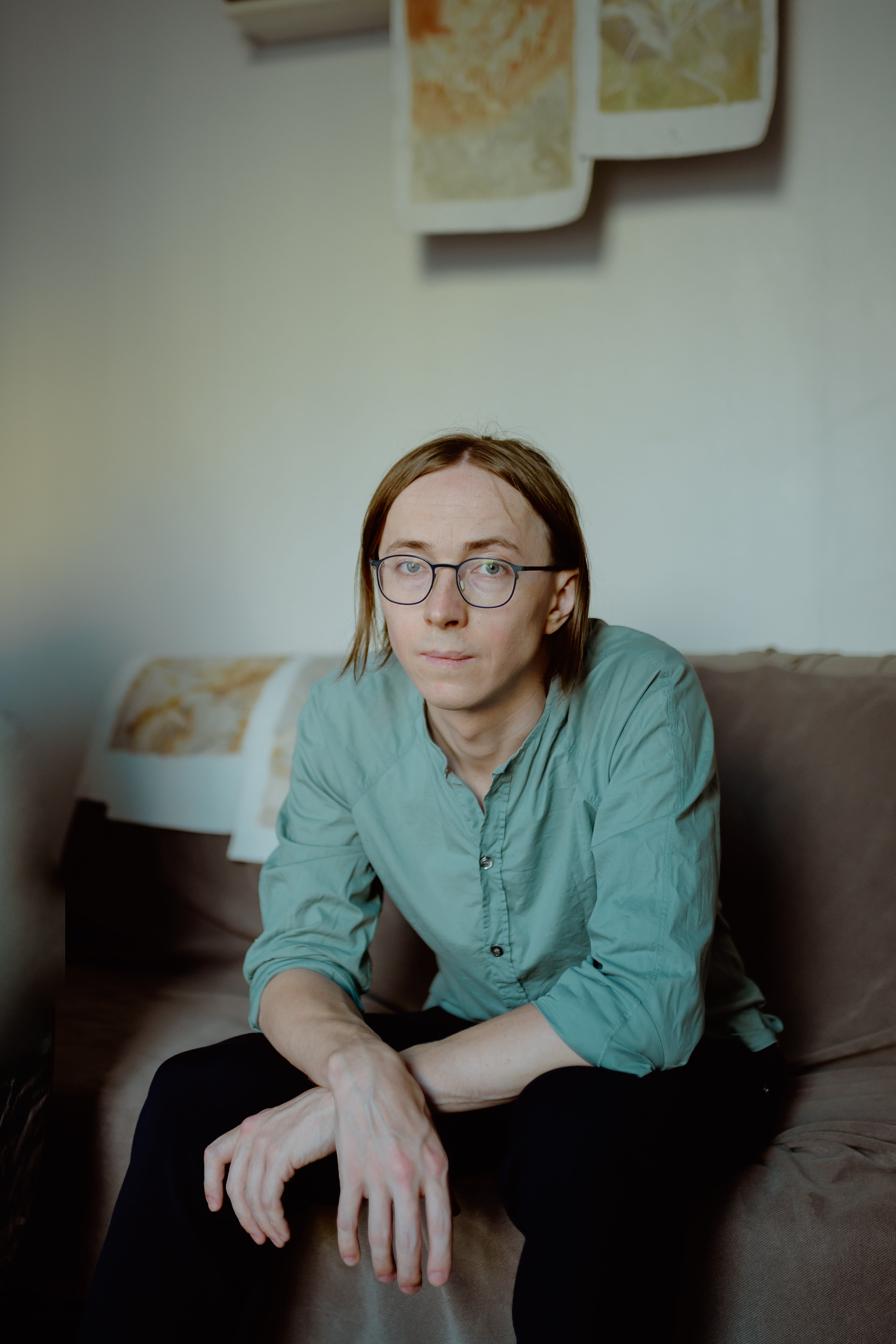 As an artist, you work at the crossroads of technology and traditional painting, using these tools to explore broader social processes. When did you consciously begin merging painting and digital media in your work?
As an artist, you work at the crossroads of technology and traditional painting, using these tools to explore broader social processes. When did you consciously begin merging painting and digital media in your work?
There wasn’t really a single turning point. Maybe it started a long time ago when I read Friedrich Kittler’s lectures. The desire to work with multiple media grew organically from my interest in the ways images are produced in the broadest sense. I often use digital tools in my practice; for me, they’re simply instruments, for example, in creating sketches for paintings. At some point, I began experimenting with projects that attempted to merge these practices and observe how different forms of image reproduction can exist in dialogue with one another.
In your work, you often explore themes that go beyond pure visual aesthetics. One current topic you’re focused on is how visual culture is intimately linked to violence. Can you tell us more about what you're working on right now?
Right now I’m working on a project based on an archive of visual evidence of violence, including images from social media, news sources, and other media platforms. I treat the image not just as a reflection of reality but as a tool of manipulation that actively shapes perception. The process of overwhelming viewers with a flood of visual information they can’t fully process triggers an emotional response. In this sense, media functions as a machine for producing emotions, and perhaps the most significant among them is doubt.
I’m particularly interested in how certain elements of visual culture, such as aggression, violence, and underlying social tension become normalized through screens and digital networks, appearing in the form of advertisements, media imagery, and political narratives.
As part of this project, I reconstruct specific places and events in three-dimensional digital environments using documentary video evidence shared by eyewitnesses on social media. From this massive visual archive, I isolate fragments, selecting seemingly minor moments or images and transfer them onto canvas. During this translation, the image becomes highly abstracted and loses its original connection to the subject it once depicted. To me, it turns into a kind of symbol that overlays or even replaces the original, yet still coexists with it. The work may look abstract, but within its structure it preserves traces of its origin in real visual objects and events.
How do you see the role of the viewer in your projects?
That’s an interesting question. There’s a difference between looking at a painting and viewing something mediated by technology. A painting is a deeply material object, tied to gesture, physical touch, texture. It has weight. In that sense, it demands a slower kind of viewing, if you can call it that.
Digital images, on the other hand, are designed for quick consumption. They pull the viewer in with speed and intensity. For example, at the 2017 Triennial at the Garage Museum, I presented a VR piece. Watching people interact with it was fascinating. Once someone put on the headset, they’d completely exit the physical space. People would stumble or try to touch objects that only existed virtually. That effect was especially intriguing because it showed how technology can shift our perception of reality, creating a new level of interaction between viewer and artwork.
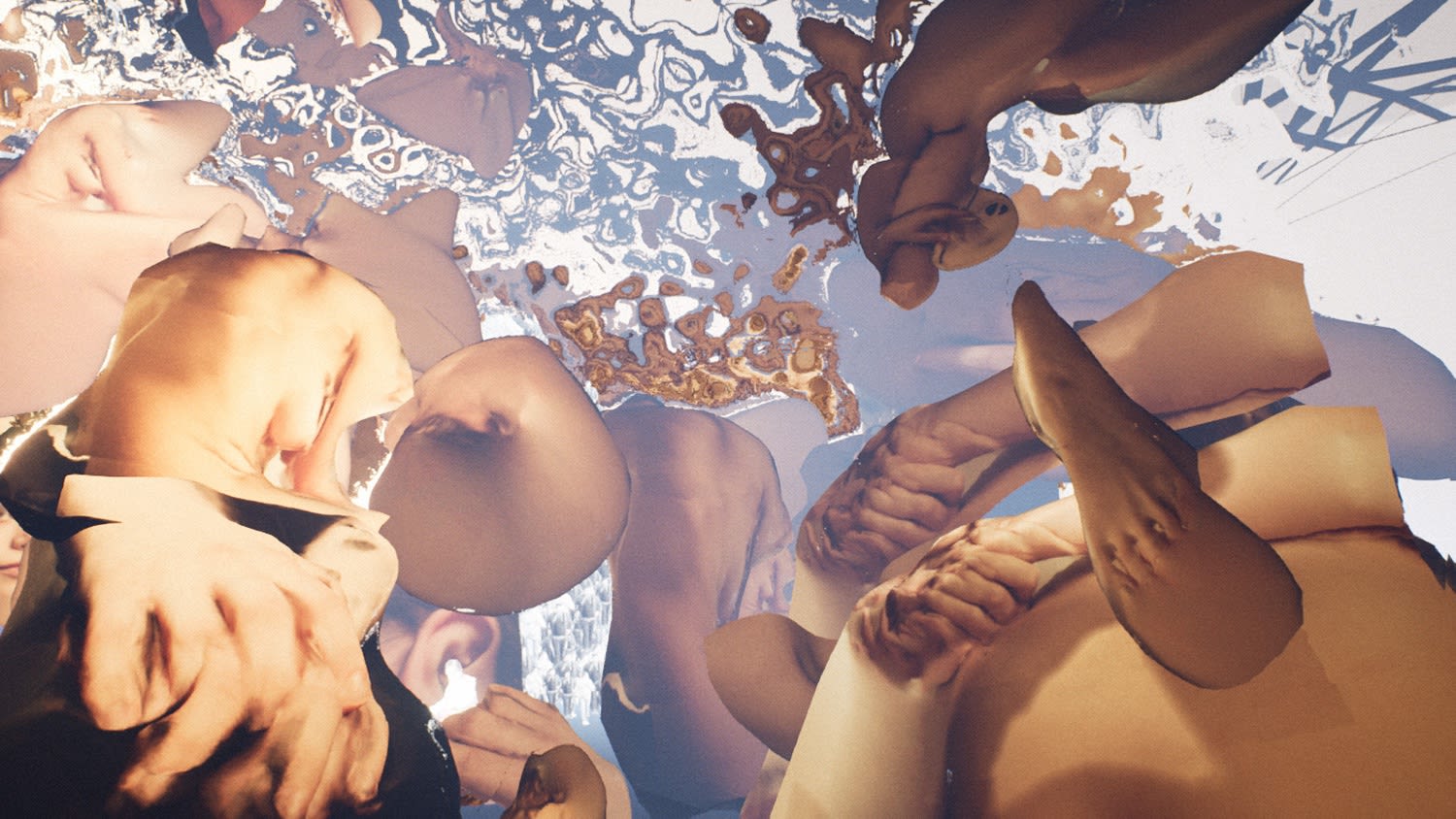
Screenshot from the project It Will Start Raining, The Body Is Mine, Arms and Legs I Shall Chop, Unreal Engine, 2017
Have there been instances when viewers interpreted your work in unexpected ways?
Yes, and that’s always the most exciting part: when the work starts living its own life. In one installation, The Speech of the Transparency Dictat, I used a smartphone as part of the display, with an app that allowed viewers to leave a trace on the screen through touch. But what happened was that visitors began using it to take selfies. I hadn’t anticipated that. I didn’t intend for the device to become a tool for recording people’s presence in that way. As a result, I ended up with several portraits taken from unexpected angles.
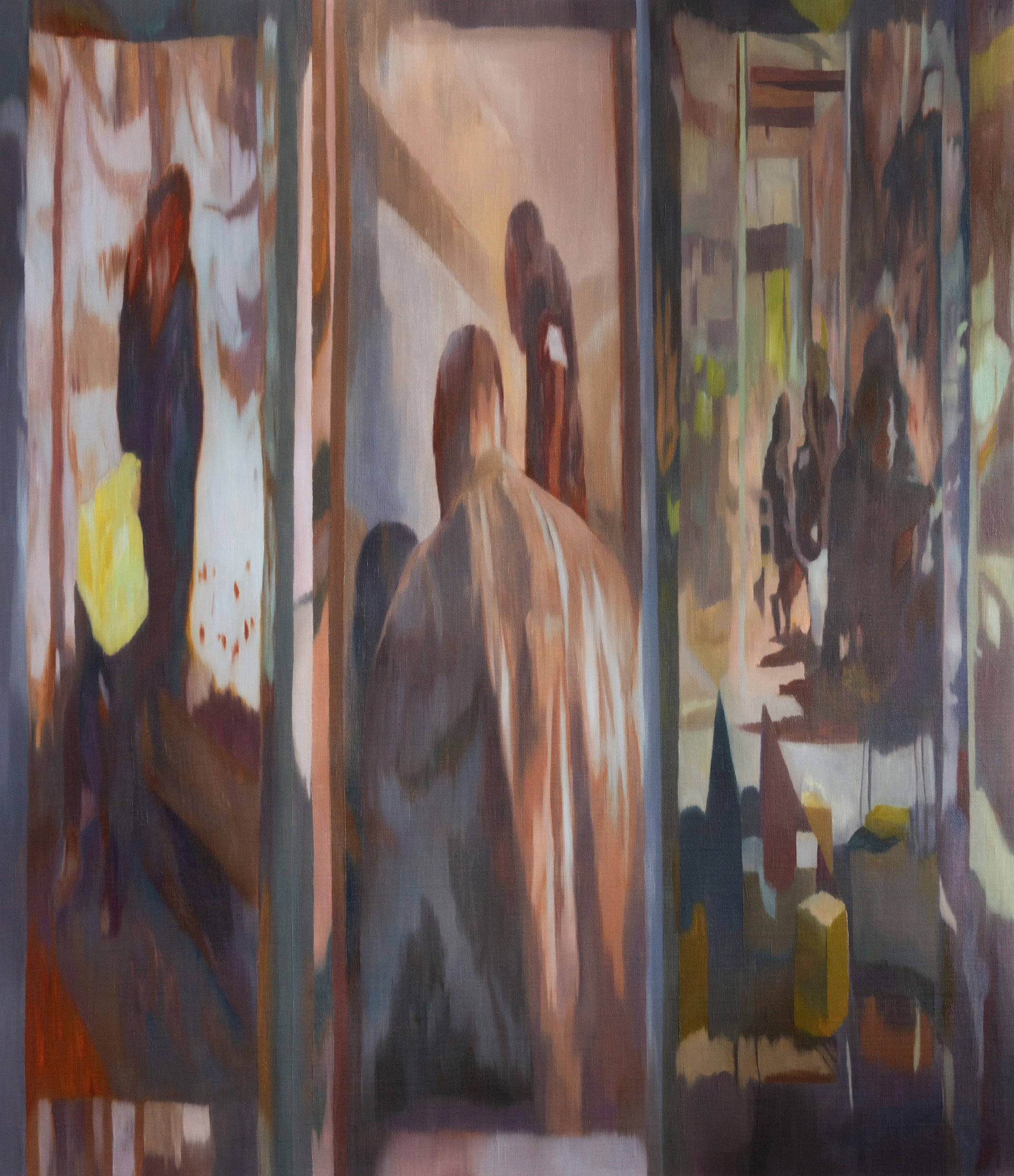
Right now you’re working in traditional media: canvas and oil. But in your earlier works, you experimented with UV printing on canvas, creating a unique interplay between material and digital image. Could you tell us more about that process and why you chose that technique?
Working with UV printing was a fascinating experiment for me — a way of translating and transforming an image as it shifted from the digital realm to a physical surface. The process involves digital printing with inks that are cured on the surface using UV light. But what interested me wasn’t just the outcome, it was the interaction with the material itself. I would take a digital image, something shot with a phone or camera, and transfer it to canvas using this printing method. That was the first step in turning a digital image into a physical object.
What was most compelling, though, was deliberately breaking the technical process. If you skip the curing step, the ink stays soft and malleable. This allowed me to work directly with the ink on the canvas, rubbing it into the texture of the fabric, pressing it into the material. This created a unique dialogue between the image and the object. I’d then cure the ink with UV light afterward. That added a layer of unpredictability, where the act of applying the image became as important as the result itself. The textures and visuals, baked into the surface by UV light, became physical imprints of the digital objects they originally were.
Does the color palette in your work reflect a conscious choice?
Color always plays a significant role for me, but its use depends on the materials I’m working with and the technical means involved. For example, in my printed works, the color would deepen with each pass of the printer, eventually reaching a kind of burnt state, like burnt sugar, but with a strong chemical smell from the solvents. In my more recent paintings, the colors are much brighter, but they also have a slightly worn, hazy quality, like a veil. Something the eye has to push through. At the same time, it’s also what holds the viewer’s attention.
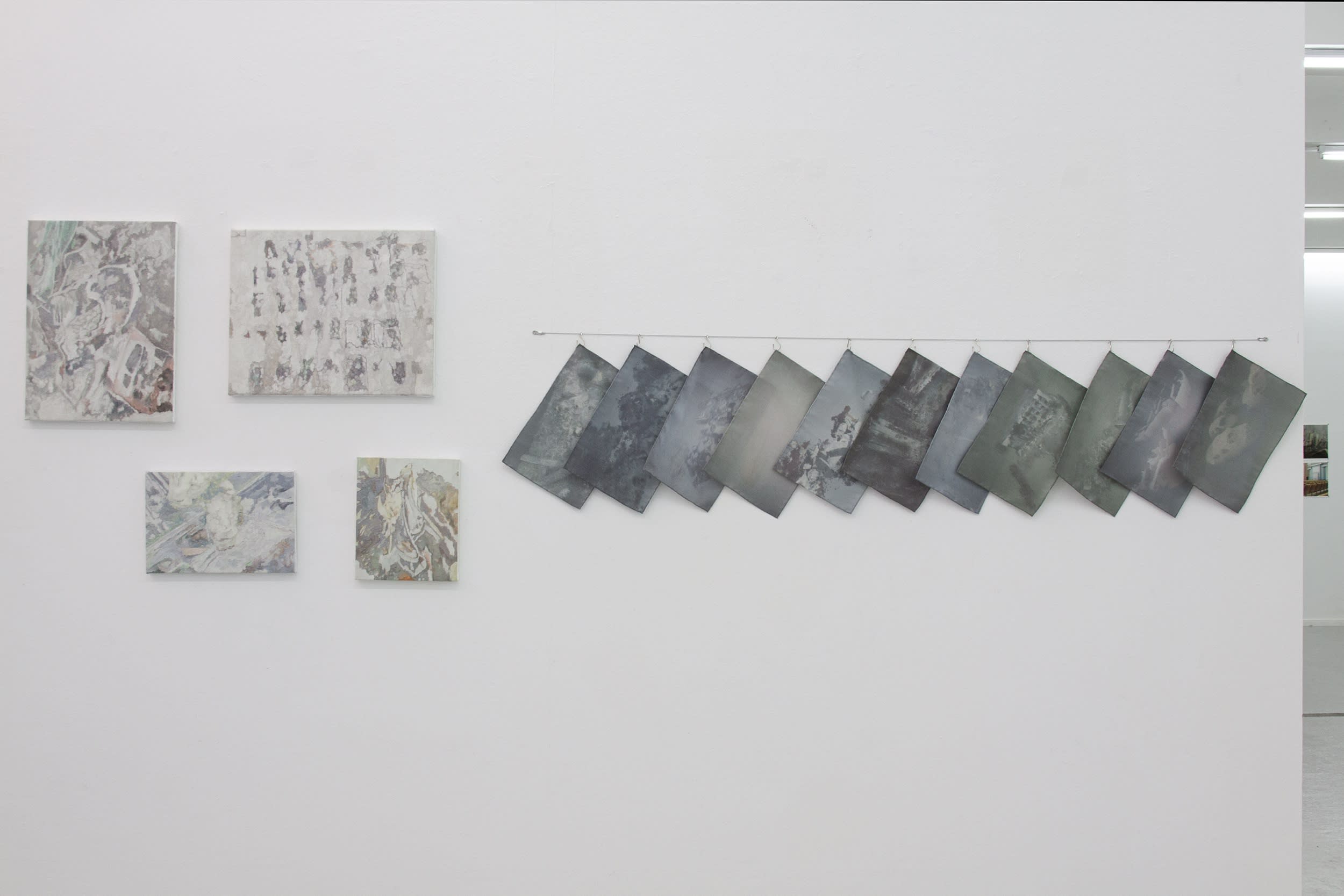
X – Nowness’ Collectivе Exhibition, Basel, Switzerland, 2022
How do you see your role as an artist today, especially when visual culture has become such a powerful tool of influence?
I think the artist's task is to poke holes in the visual fabric, discovering the lack, not settling for an image of hearth.
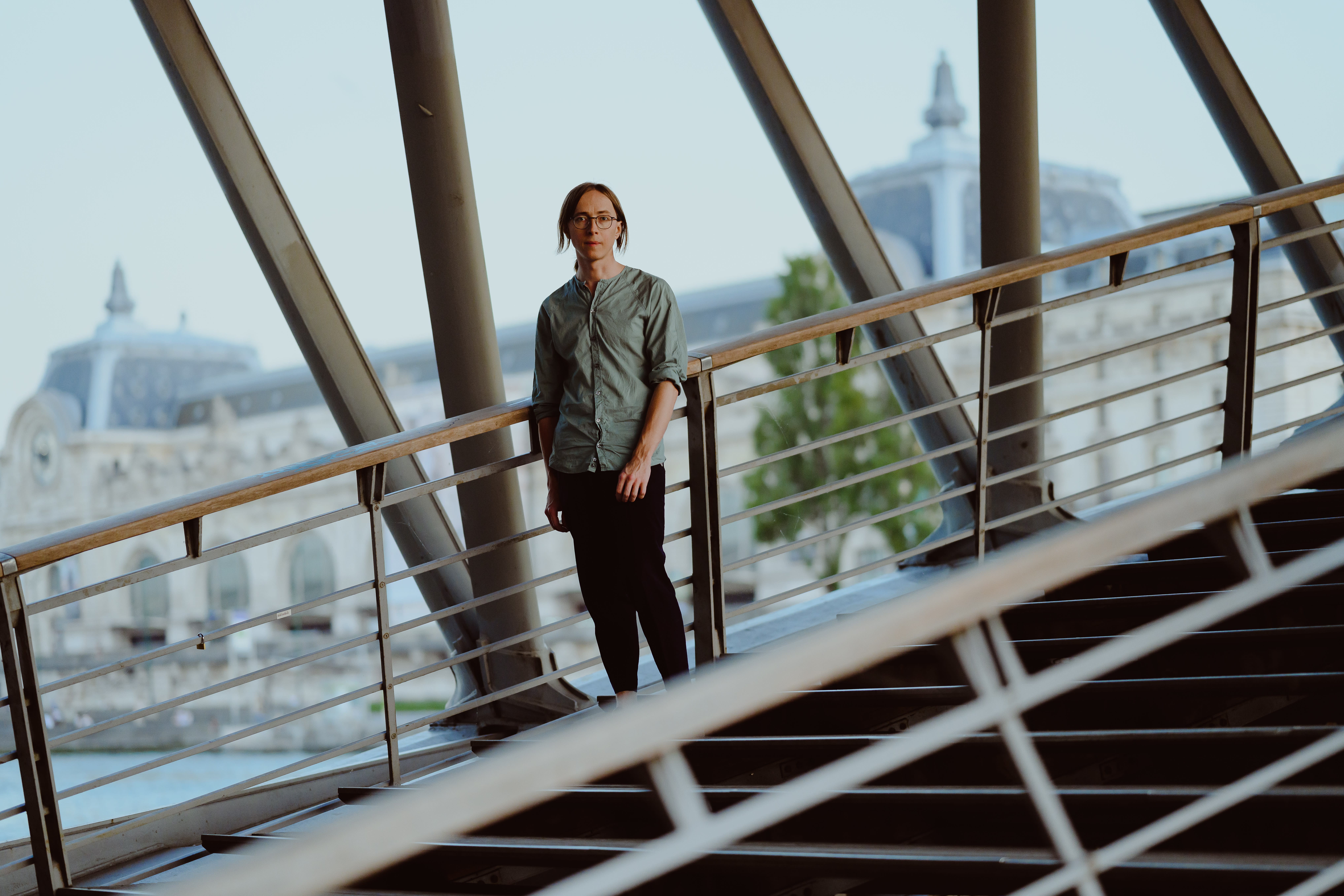
Photos by Anna Denisova @anndoing
